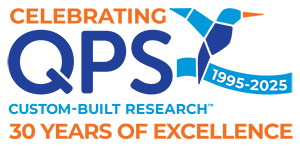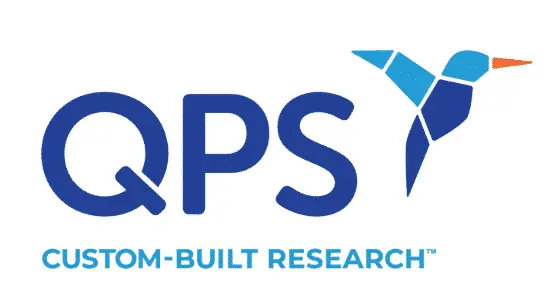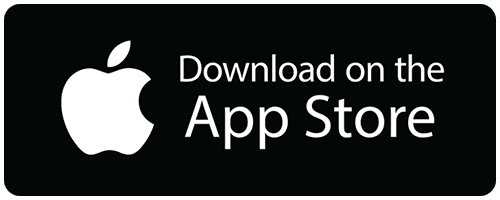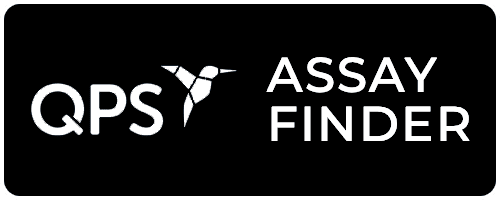Comprehensive Pharmacovigilance for Your Clinical Trials
At QPS, we have established robust systems to identify, record, report, and analyze safety data throughout a clinical trial. These systems are designed to ensure that any potential safety signals are quickly detected and thoroughly evaluated, allowing for rapid decision-making and intervention when necessary. Our proactive approach includes continuous monitoring and assessment, helping to mitigate risks and protect participant safety while maintaining compliance with regulatory requirements. By leveraging advanced tools and methodologies, we ensure that safety management is a seamless, integral part of the clinical trial process.
What Is Pharmacovigilance?
Pharmacovigilance refers to the science and activities related to the detection, assessment, understanding, and prevention of adverse effects or any other drug-related problems. It plays a critical role in ensuring the safety and well-being of participants in clinical trials while maintaining regulatory compliance.
At QPS, we prioritize participant safety and regulatory compliance in every clinical trial. Our pharmacovigilance systems are designed to proactively identify, document, analyze, and address safety concerns at every stage of your study. With a focus on rapid detection and thorough evaluation of potential safety signals, we empower you to make informed decisions and take swift action when needed.
By leveraging cutting-edge tools, proven methodologies, and a proactive approach, we integrate safety management seamlessly into your clinical trial process. This commitment helps mitigate risks, ensure participant safety, and maintain full compliance with global regulatory standards.
Our Pharmacovigilance Services
We provide end-to-end safety management tailored to the unique requirements of your study:
Key Components of a Safety Management Plan in Pharmacovigilance:
1. Risk Management Strategy:
- Risk Assessment: Identifying potential risks associated with a drug's use (e.g., side effects, drug interactions, misuse).
- Risk Minimization: Plans to minimize these risks through measures like patient education, restricted distribution, labeling changes, or contraindications.
- Benefit-Risk Assessment: Continuous evaluation of the drug’s overall benefit compared to the potential risks.
2. Post-Marketing Surveillance:
- Spontaneous Reporting: Encouraging healthcare professionals and patients to report adverse events to regulatory authorities.
- Active Surveillance: Proactively gathering safety data through controlled studies, registries, or other monitoring programs.
- Signal Detection: Identifying new safety concerns or trends based on collected data.
3. Pharmacovigilance System:
- Adverse Event Reporting: Establishing a system for the collection, assessment, and reporting of adverse events or side effects.
- Data Management: A process for handling and analyzing safety data from various sources like clinical trials, healthcare databases, and reports from patients or healthcare providers.
- Signal Management: Identifying, evaluating, and investigating safety signals, which are indications of new or previously undetected adverse effects.
4. Safety Communication and Risk Communication:
- Regulatory Reporting: Timely reporting of serious adverse events (SAEs) and other safety issues to regulatory agencies like the FDA, EMA, or other national health authorities.
- Risk Communication: Communicating safety risks to stakeholders, including healthcare professionals, patients, and regulatory authorities, via product labeling, warnings, or safety advisories.
5. Periodic Safety Update Reports (PSURs):
- These are regular reports submitted to regulatory authorities that summarize the safety data, including adverse events, and include an updated benefit-risk evaluation of the drug or device.
6. Compliance with Regulatory Requirements:
- Ensuring adherence to local and global pharmacovigilance regulations and guidelines such as ICH E2E, GVP (Good Pharmacovigilance Practices), and relevant national legislation.
- Maintaining a comprehensive and updated pharmacovigilance system that complies with these requirements.
7. Quality Management:
- Monitoring and ensuring the quality and effectiveness of pharmacovigilance activities and continuous improvement based on audits, reviews, and feedback.
8. Training and Education:
- Ensuring that relevant personnel are properly trained on safety monitoring and pharmacovigilance practices.
- Keeping up-to-date with evolving regulations and safety guidelines.
9. Emergency Response Plans:
- Developing plans to manage emergency situations such as the identification of a major safety issue (e.g., withdrawal of a drug from the market, product recalls).
10. Collaboration with External Stakeholders:
- Establishing partnerships with regulatory agencies, healthcare providers, patients, and industry stakeholders to foster the effective collection and assessment of safety information.
In summary, a Safety Management Plan for pharmacovigilance is a structured approach to monitoring the safety of drugs throughout their lifecycle, from pre-marketing to post-marketing stages. It ensures that any emerging safety concerns are swiftly identified and addressed, while also promoting continuous learning and improvement of safety practices.
Key Aspects of Safety Database Development in Pharmacovigilance:
1. Data Collection:
- Source of Data: The safety database collects data from multiple sources, including spontaneous reports from healthcare professionals and patients, clinical trials, post-marketing surveillance programs, literature reports, and data from registries or observational studies.
- Adverse Event Reports: This includes data on adverse events (AEs), serious adverse events (SAEs), and product defects or issues. Each report will typically include patient demographics, the nature of the event, the suspected drug or device, and its outcome.
- Data Standardization: To ensure consistency and comparability, data formats and coding systems are standardized. For instance, MedDRA (Medical Dictionary for Regulatory Activities) is commonly used to code adverse event terms, while WHO-DD (World Health Organization Drug Dictionary) may be used for drug names and dosages.
2. Database Structure and Design:
- Data Model: The database should be designed to handle large volumes of data efficiently, including fields for event description, product information, patient history, medical conditions, and outcomes.
- Scalability: The database must be scalable to accommodate increasing amounts of data over time as more adverse event reports are collected.
- Data Integrity: Ensuring the accuracy, completeness, and consistency of the data is essential for proper safety assessments and regulatory reporting.
- Security and Privacy: The database must meet strict data protection regulations (such as GDPR or HIPAA) to ensure the confidentiality of patient information.
3. Data Management and Integration:
- Data Entry and Validation: The safety database should support the input of data from various reporting channels and validate it to ensure consistency and completeness. Automated validation checks can prevent errors or missing information.
- Data Linking: The system should allow for the integration and linking of data from multiple sources, such as clinical trials, post-market reports, and patient registries, to provide a comprehensive view of the product's safety profile.
- Data Retrieval: It should have advanced querying capabilities to allow pharmacovigilance professionals to search, retrieve, and analyze specific data sets quickly, e.g., by drug, event type, or patient demographics.
4. Signal Detection and Analysis:
- Signal Detection Tools: The safety database should support statistical analysis and the identification of safety signals—unexpected or new associations between a drug and an adverse event. Techniques such as disproportionality analysis (e.g., reporting odds ratios) can help detect these signals.
- Trend Analysis: The system should allow for trend analysis of adverse events over time to identify patterns or increases in certain types of adverse events.
- Advanced Analytics: Sophisticated analytics, including machine learning models and natural language processing (NLP), can enhance signal detection by identifying subtle patterns or unstructured data in free-text reports.
5. Regulatory Compliance:
- Regulatory Reporting: Safety databases must support the generation of required reports for regulatory bodies (e.g., the FDA, EMA, etc.), including:
- Periodic Safety Update Reports (PSURs)
- Individual Case Safety Reports (ICSRs)
- Risk Management Plans (RMPs)
- Expedited reporting for serious and unexpected adverse events
- Audit Trails: A safety database should maintain an audit trail to track all actions performed within the system (e.g., data entry, data modification, and report generation) to meet compliance requirements.
- Data Retention: It should support long-term retention of safety data in accordance with regulatory and legal requirements.
6. User Access and Role Management:
- Access Control: The database should have robust role-based access control to restrict and monitor access to sensitive data. Different users, such as pharmacovigilance specialists, safety officers, and regulatory affairs teams, may have different levels of access.
- Collaboration: It should support collaborative workflows for teams to review, analyze, and report safety data in real-time.
7. Data Quality and Maintenance:
- Data Quality Assurance: Continuous monitoring and maintenance are required to ensure the quality of data entered into the database. This includes checking for duplicate reports, ensuring that information is up to date, and correcting errors as they arise.
- Data Cleansing: Over time, safety data might require cleaning or validation to address discrepancies, such as missing or conflicting information.
8. Data Export and Reporting:
- The database must allow for easy export of data in various formats (e.g., CSV, XML, PDF) to generate reports for internal and regulatory purposes.
- Visualization: Advanced safety databases often include data visualization tools to allow for graphical representation of trends, signals, and adverse event distributions.
9. Benefits of a Well-Developed Safety Database:
- Timely Identification of Safety Signals: A well-structured database helps detect emerging safety issues quickly, enabling prompt action to protect public health.
- Regulatory Compliance: Ensures the organization meets the strict pharmacovigilance reporting requirements of global health authorities.
- Efficient Data Handling: Helps streamline the management of large volumes of safety data, ensuring that the information is accurate, up-to-date, and easily accessible.
- Improved Risk Management: Enables better risk management by providing comprehensive data for assessing the benefit-risk profile of a drug or device.
- Patient Safety: Ultimately, the purpose of a safety database is to enhance patient safety by facilitating proactive monitoring and swift action in response to adverse events.
In summary, developing a safety database in pharmacovigilance is a critical component in the effective monitoring of drug safety. It ensures that all safety data is collected, analyzed, and reported in accordance with regulatory standards and that new safety signals are detected and acted upon swiftly. A well-designed and maintained database forms the foundation for making informed decisions on drug safety and protecting public health.
Comprehensive safety reporting in pharmacovigilance is crucial for monitoring the safety of pharmaceutical products, ensuring regulatory compliance, and protecting public health. It involves the collection, evaluation, and reporting of safety information, such as adverse events (AEs), side effects, and risks associated with drugs and medical devices throughout their lifecycle. Comprehensive safety reporting in pharmacovigilance is a multi-faceted process that ensures the ongoing safety of pharmaceutical products. It encompasses the collection and analysis of adverse event data, timely reporting to regulatory agencies, signal detection, risk management, and continuous safety monitoring. By ensuring that safety data is accurately reported, analyzed, and acted upon, pharmacovigilance helps mitigate risks, protect patients, and ensure regulatory compliance.
Key Aspects of Medical Monitoring in Pharmacovigilance:
1. Adverse Event (AE) Detection and Reporting:
- Early Identification: Medical monitoring involves the early detection of adverse events (AEs) and serious adverse events (SAEs) through regular monitoring of clinical trial data, patient reports, and safety databases.
- Spontaneous Reports: Apart from clinical trials, AE reports from healthcare professionals, patients, and caregivers also need to be monitored continuously for any emerging safety signals.
- Data Collection: It’s critical to collect accurate and complete AE information, including details about the patient, event description, causality assessment, and the timeline of the event.
2. Causality Assessment:
- Determining Relationship: Medical monitoring includes evaluating the potential relationship between the drug and the adverse event. This process typically involves a causality assessment to determine whether the drug was likely the cause of the AE or whether other factors contributed.
- Methods: Various methods are used for causality assessment, such as the Naranjo Scale, WHO-UMC Causality Assessment Method, or expert judgment. This helps in determining whether an event is likely to be drug-related.
3. Safety Signal Detection:
- Signal Identification: One of the core tasks of medical monitoring is to identify emerging safety signals from clinical trial data or real-world post-marketing data. A signal may indicate a potential safety concern, such as an unexpected adverse event or a higher-than-expected occurrence of known events.
- Data Analysis: Signal detection often involves analyzing patterns or clusters of adverse events that appear to be more frequent than expected, particularly during specific timeframes, in certain patient populations, or with certain dosages.
- Statistical Techniques: Advanced statistical methods, such as disproportionality analysis (e.g., reporting odds ratio, Bayesian data mining), are often used to detect signals in large databases of AE reports.
4. Medical Review of Clinical Data:
- Monitoring Clinical Trials: In clinical trials, medical monitoring includes a thorough review of clinical data to ensure patient safety, especially by tracking safety endpoints, laboratory test results, and vital signs.
- Interim Safety Reviews: During clinical trials, medical monitors may perform interim reviews of safety data to ensure that no new, serious, or unexpected risks are emerging, and to determine whether the trial should continue as planned or if changes are needed.
- Patient Safety: A key responsibility is ensuring that any risks to patient safety are addressed promptly. This might involve adjusting dosages, modifying treatment regimens, or halting studies if necessary.
5. Risk Management and Mitigation:
- Assessing Risk: Medical monitoring is closely tied to risk management strategies, where the identified risks are assessed for their impact on patients and the overall benefit-risk balance of the drug.
- Mitigation Plans: Once risks are identified, medical monitors collaborate with safety teams to create risk minimization strategies, such as changes to the product label, additional warnings, risk communication to healthcare providers, or specific safety monitoring for certain patient populations.
- Risk Evaluation and Mitigation Strategies (REMS): For drugs with high-risk profiles, medical monitoring may support the implementation of REMS, which may include additional patient monitoring, restricted prescribing, and distribution limitations.
6. Continuous Safety Monitoring:
- Ongoing Surveillance: Medical monitoring is not limited to clinical trials but continues in the post-marketing phase, where safety monitoring is done through real-world data, spontaneous reports, observational studies, and registry data.
- Product Lifecycle Management: Monitoring continues throughout the lifecycle of the product, from pre-approval clinical trials to post-marketing surveillance. Safety data from different sources is integrated to provide a holistic view of the product's safety profile.
7. Medical Review of Individual Case Safety Reports (ICSRs):
- Reviewing ICSRs: In pharmacovigilance, medical monitors play a key role in reviewing individual case safety reports (ICSRs) submitted by healthcare professionals, patients, or manufacturers. They assess the medical validity of each report and provide input on causality and severity.
- Assessing Seriousness and Expectedness: Determining whether the reported event is serious (e.g., resulting in death or hospitalization) and unexpected (i.e., not listed in the product’s labeling) is essential in reporting to regulatory agencies.
- Follow-Up and Clarification: In some cases, additional follow-up may be needed to clarify the details of the event, such as obtaining additional medical records or performing a deeper investigation into the circumstances surrounding the event.
8. Regulatory Compliance and Reporting:
- Regulatory Requirements: Medical monitoring ensures that adverse event data is appropriately captured and reported according to global regulatory guidelines, including reporting timelines and formats (e.g., ICH E2E, MedDRA coding).
- Expedited Reporting: Serious and unexpected AEs must be reported to health authorities within the required timeframes (e.g., 7 or 15 days for expedited reporting). Medical monitors play a key role in reviewing cases to determine the urgency and appropriateness of regulatory reporting.
- Regulatory Submissions: Medical monitors contribute to the preparation of reports like Periodic Safety Update Reports (PSURs), Risk Management Plans (RMPs), and Development Safety Update Reports (DSURs), ensuring they include comprehensive safety data and evaluations.
9. Clinical Decision Support and Recommendations:
- Providing Guidance: Medical monitors offer clinical decision-making support to the study teams, healthcare providers, and regulatory authorities. This includes advice on managing adverse events, adjusting dosing regimens, and ensuring patient safety.
- Patient Safety Protocols: In clinical trials, they may also recommend changes to the study protocol to improve patient safety, such as modifying exclusion criteria or adding new monitoring requirements based on emerging safety data.
10. Collaboration with Other Teams:
- Cross-Functional Collaboration: Medical monitoring works closely with other pharmacovigilance functions, such as data management, regulatory affairs, and risk management teams, to ensure that safety concerns are identified and appropriately addressed.
- Collaboration with Clinical Research Teams: In clinical trials, medical monitors collaborate with clinical research teams to ensure that patient safety is prioritized, and adverse events are appropriately captured, assessed, and managed.
- External Stakeholders: Medical monitoring also involves communication with external stakeholders such as healthcare professionals, regulatory authorities, and research institutions to share information about safety issues, risk mitigation strategies, or protocol modifications.
11. Training and Education:
- Ongoing Training: Medical monitors must stay up-to-date on pharmacovigilance practices, emerging safety data, and regulatory requirements. They also provide training for clinical investigators and staff to ensure proper reporting of adverse events.
- Internal Awareness: Medical monitors help ensure that internal teams are informed about the importance of safety monitoring and the tools and processes needed for effective monitoring.
In summary, medical monitoring is a key component of pharmacovigilance that ensures the safety of patients throughout the lifecycle of a drug. By systematically detecting adverse events, assessing causality, and analyzing safety data, medical monitors play a pivotal role in identifying and managing risks, ensuring compliance with regulatory requirements, and providing clinical guidance to mitigate potential safety issues. Their efforts contribute to maintaining the overall benefit-risk profile of pharmaceutical products and protecting patient health.
Complete safety management forms the backbone of ensuring the safety of pharmaceutical products throughout their lifecycle, from development to post-marketing. Effective safety management in pharmacovigilance focuses on the systematic collection, assessment, and mitigation of risks associated with the use of drugs and medical devices, with the ultimate goal of identify adverse events, assess safety signals, implement risk minimization strategies, ensure regulatory compliance, and protect patient health through timely and transparent communication. It encompasses a range of activities, from identifying and assessing risks during clinical trials, to continuously monitoring drug safety post-market. Most of these activities are outlined in other sections of this page.
Effective safety management helps to identify adverse events, assess safety signals, implement risk minimization strategies, ensure regulatory compliance, and protect patient health through timely and transparent communication. This holistic approach is essential for maintaining the benefit-risk balance of pharmaceutical products and safeguarding public health.
Why Choose QPS?
- Proven Expertise: Decades of experience in pharmacovigilance and clinical trials.
- Advanced Technology: State-of-the-art tools for safety monitoring and reporting.
- Global Compliance: Adherence to international safety and regulatory standards.
- Participant-Centered Approach: Ensuring the safety and well-being of study participants.
Partner with QPS to make pharmacovigilance a seamless, reliable component of your clinical trial process. Let us help you deliver results with confidence and integrity.
Links to Relevant Documents
- Efficiently Performing Two Global Approval Studies in Prostate Cancer Patients
- Phase II-IV Clinical Overview
- Phase II-IV Clinical Services & Locations
- Early Phase Clinical Overview
- Expedited Study Delivery – Logistics
- Expedited Study Delivery – Pharmacy
- Studying Sedatives in Phase I Studies
- Pharmacokinetic Studies in Patients
- Corporate Overview Clinical Sites
